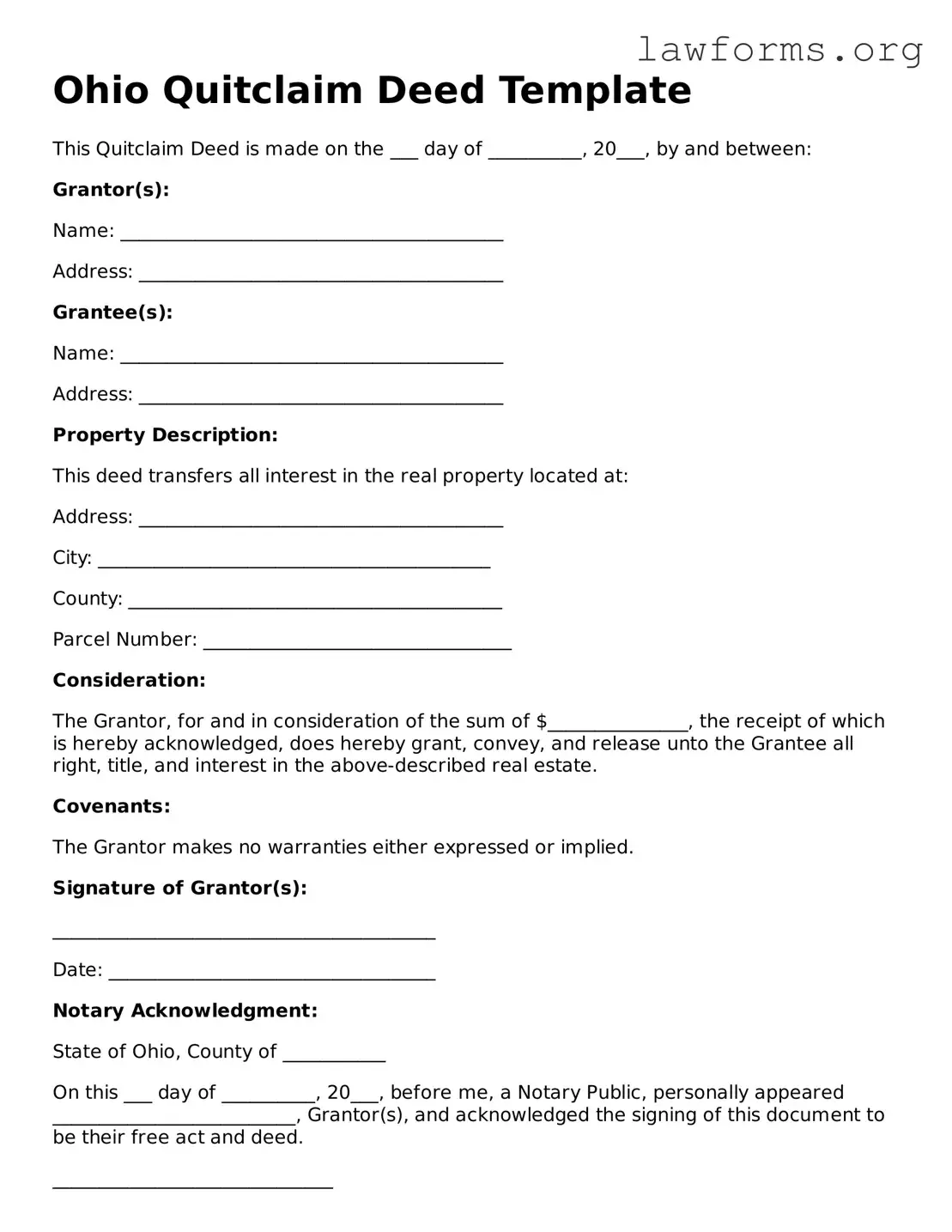Ohio Quitclaim Deed Template
This Quitclaim Deed is made on the ___ day of __________, 20___, by and between:
Grantor(s):
Name: _________________________________________
Address: _______________________________________
Grantee(s):
Name: _________________________________________
Address: _______________________________________
Property Description:
This deed transfers all interest in the real property located at:
Address: _______________________________________
City: __________________________________________
County: ________________________________________
Parcel Number: _________________________________
Consideration:
The Grantor, for and in consideration of the sum of $_______________, the receipt of which is hereby acknowledged, does hereby grant, convey, and release unto the Grantee all right, title, and interest in the above-described real estate.
Covenants:
The Grantor makes no warranties either expressed or implied.
Signature of Grantor(s):
_________________________________________
Date: ___________________________________
Notary Acknowledgment:
State of Ohio, County of ___________
On this ___ day of __________, 20___, before me, a Notary Public, personally appeared __________________________, Grantor(s), and acknowledged the signing of this document to be their free act and deed.
______________________________
Notary Public
My commission expires on: ___________________
